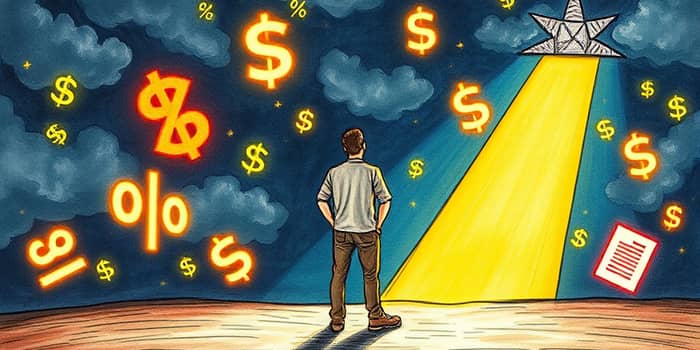
Most borrowers focus on monthly payments and the nominal interest rate, but the true out-of-pocket amount can be far higher. Hidden fees, compounding interest, and behavioral traps all conspire to inflate what you pay. This article uncovers the full spectrum of expenses and offers practical guidance to empower your financial future.
Every loan comprises core components that determine your total cost. By breaking down each element, you can make informed decisions and avoid surprises.
The fundamental formula for total cost is straightforward:
Total Cost = Principal + Total Interest Paid + All Fees Paid
Yet, borrowers often overlook recurring charges or one-time add-ons that aren’t labeled as interest.
Beyond the advertised rate lie a spectrum of charges that can add thousands to your loan’s total cost.
When these costs combine, they create the subtle weight of small fees that can go unnoticed until it’s too late.
Compound interest means you pay interest on previously accrued interest. If you miss payments, the unpaid interest can be added to your balance, accelerating growth.
Amortization schedules allocate early payments largely to interest, with principal reduction happening slowly. By making even small extra payments early on, you trigger early principal reduction slashes interest and shorten your term.
Consider a $10,000 loan at 5% APR over three years:
Simple interest: $10,000 × 0.05 × 3 = $1,500. Add a 2% origination fee ($200), and the total cost climbs to $11,700. If compounded monthly, that interest rises further, underscoring the compounding impact.
Human behavior often works against our financial interests. Beware of these traps:
These common missteps can lead to hidden or often-overlooked expenses that dramatically inflate what you owe.
Example 1: A $10,000 personal loan at 5% APR for four years with a 1% origination fee.
Interest: $10,000 × 0.05 × 4 = $2,000. Origination fee: $100. Total cost: $12,100.
Example 2: A $300,000 mortgage at 4.5% over 30 years. Scheduled interest exceeds $247,220. Adding two points ($6,000 upfront) might lower the rate to 4.25%, saving tens of thousands if you hold the loan long enough.
Your unique profile and market dynamics can push your costs higher:
You don’t have to feel powerless. Follow these steps to minimize your loan’s total cost:
By understanding every element—from principal to penalties—you gain clarity and can make choices that serve your goals.
With these insights and comparing APR instead of rate, you can negotiate better terms and shave thousands off your overall payment. Embrace the journey of financial awareness and empower your financial future by taking control of your loan’s true cost today.
References













